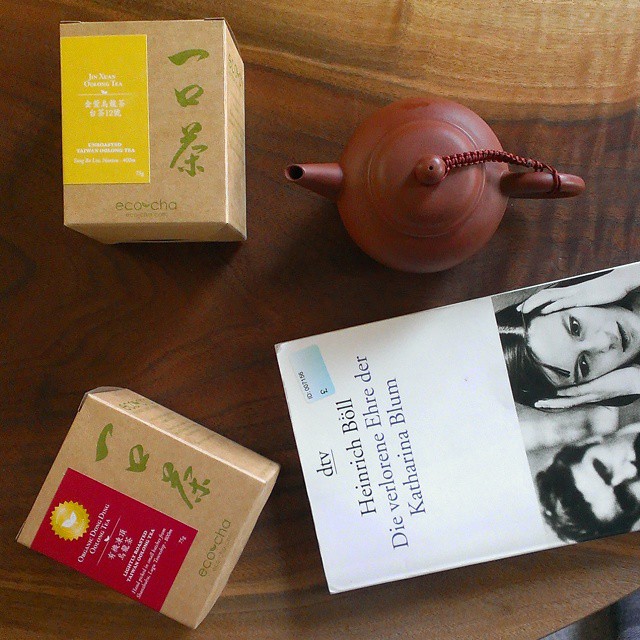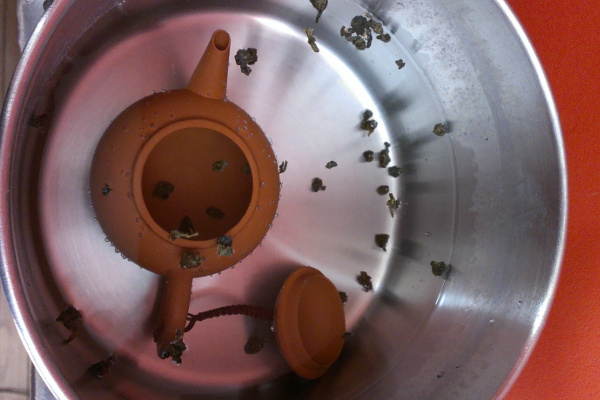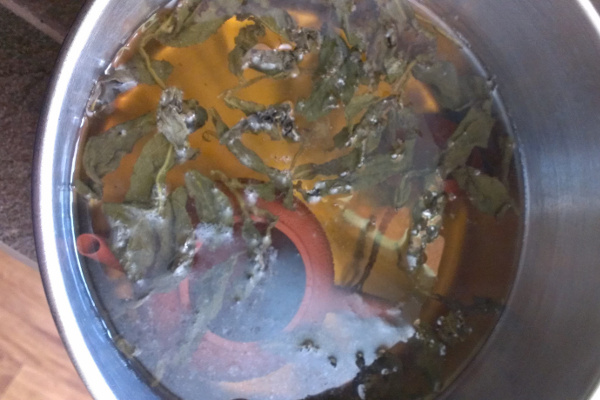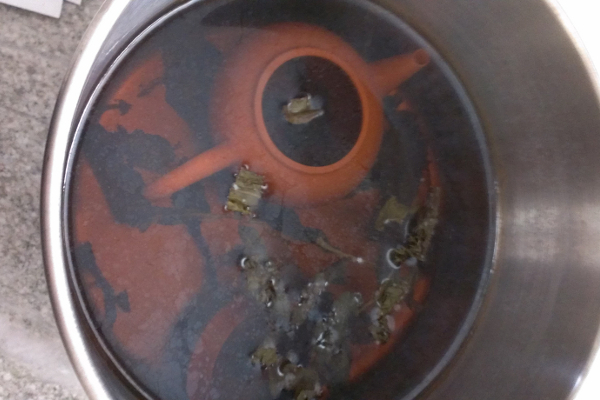You know that you’re becoming a serious tea drinker (is there a special name for that? A tea head?) when your collection of tea accouterments includes a clay teapot. I acquired one, along with some incredible organic oolong tea from Taiwan, from Eco-Cha. That’s when I found out that the teapot has to be cured.
A clay teapot is an unglazed teapot made of, obviously, clay. The pots are generally referred to as Yixing teapots, as traditionally clay teapots are made with clay from the Chinese city of Yixing. According to what I’ve read, many of the teapots that are today marketed as Yixing teapots are not, in fact, made with actual Yixing clay. If the Yixing label is important to you, you’ll have to do a bit of research to ensure that a teapot is “authentic.” One of the reasons the clay teapots are so popular is that they’re considered to be the best teapot for brewing tea.
Due to the fact that the teapots are not glazed, the teapot will, over time, absorb the flavor and color of the tea brewed in it. For that reason, it’s recommended that you reserve specific teapots for specific teas. Additionally, the pots shouldn’t be washed but simply rinsed with water. Also, because the teapots are made from unglazed clay, a curing process is encouraged just to try and limit any clay that might end up in your tea. I used a combination of the instructions from EcoCha and Serious Eats. I found it really interesting to check in on the teapot while it cured every so often. The tea leaves expanded, the water took on the tea and by the end you could see the oils from the tea floating on the top of the water.
Curing a Clay Teapot
- Place the clean clay teapot in a pot. Fill the pot with enough water to submerge the teapot.
- Select the tea you plan to use in the teapot.
- Add a teaspoon or two of the tea to the pot.
- Bring the pot to a boil. Once to a boil, remove the pot from the heat.
- Let the clay teapot steep in the pot for 24 hours.
- Remove the teapot from the pot, wipe clean and let air dry before storing.



